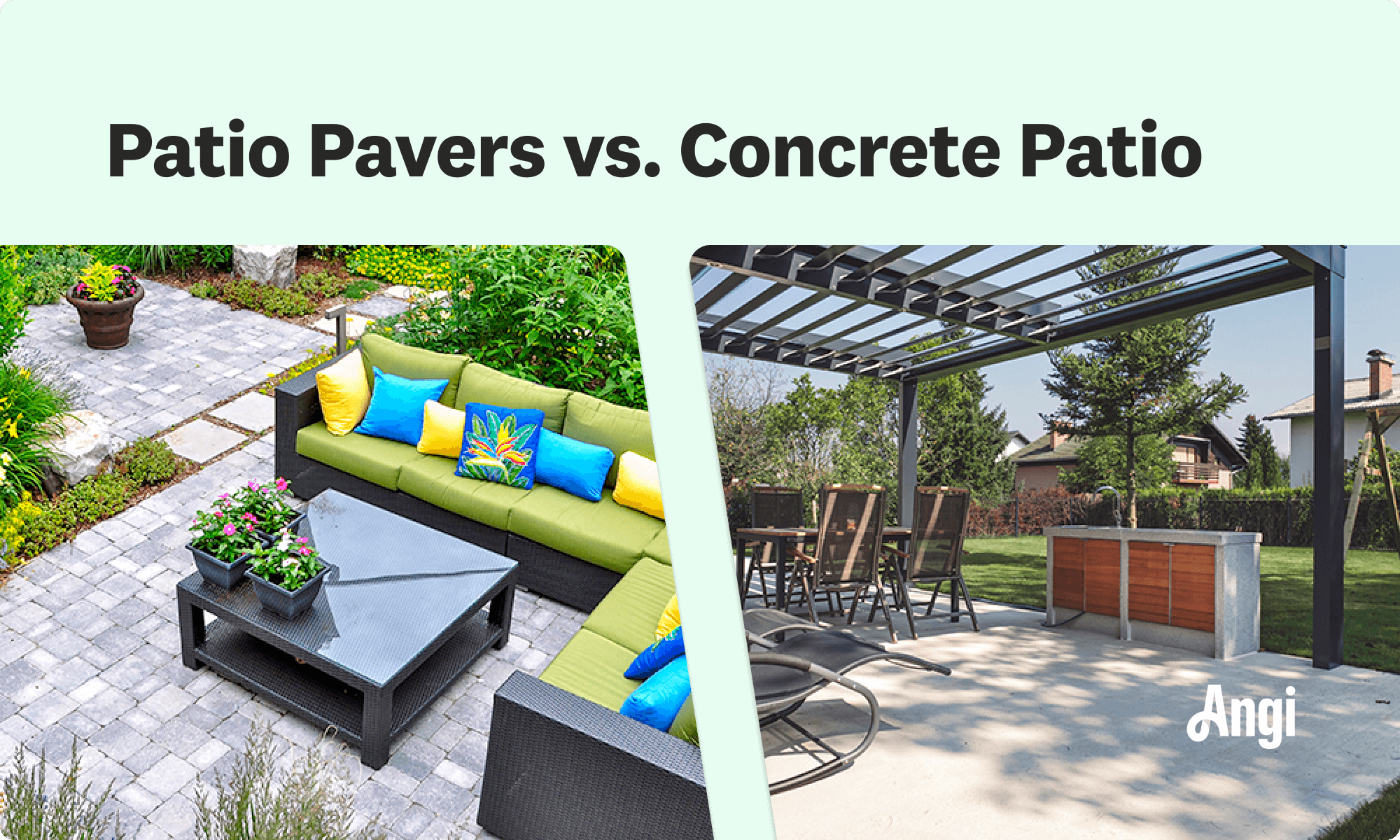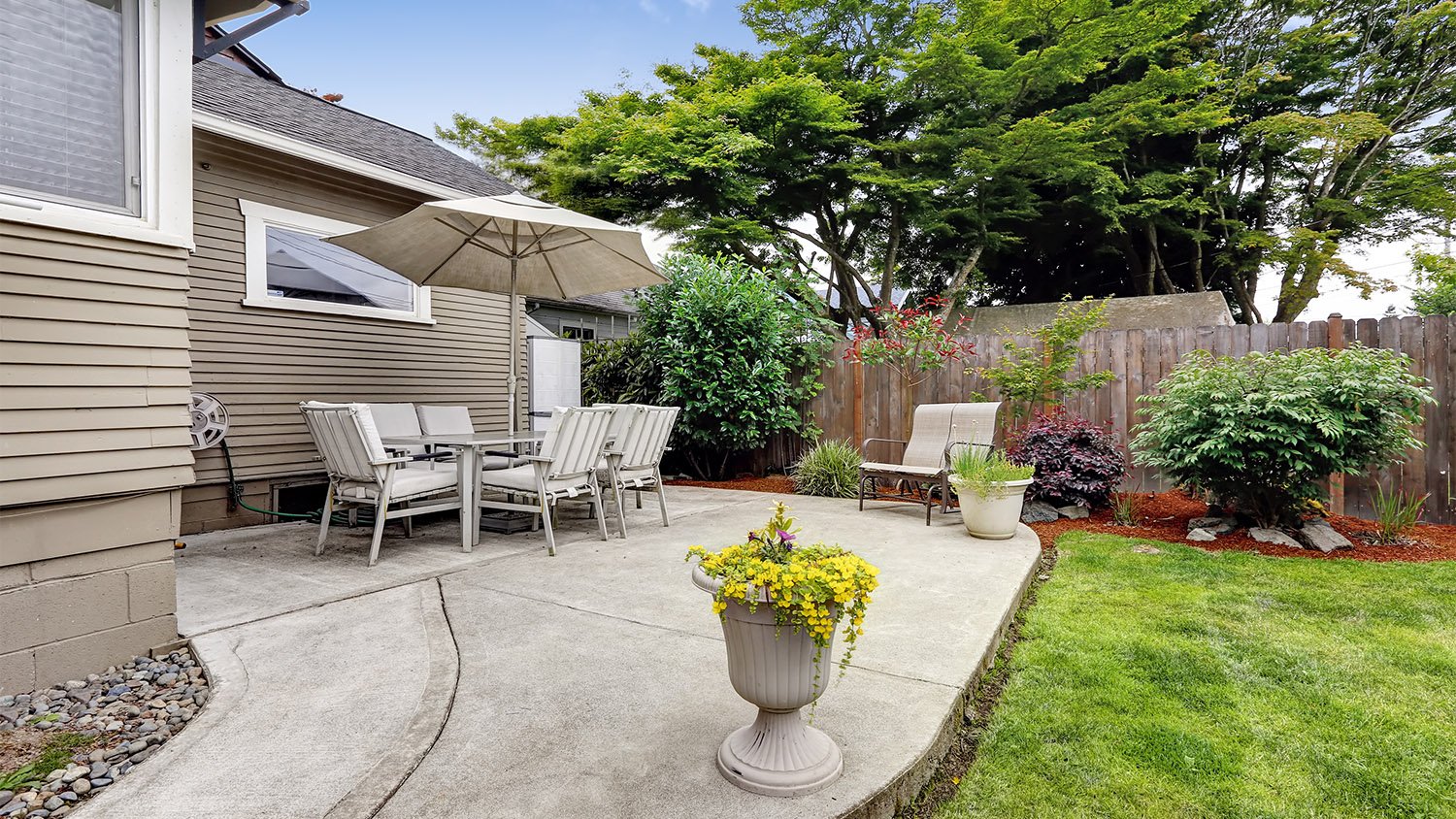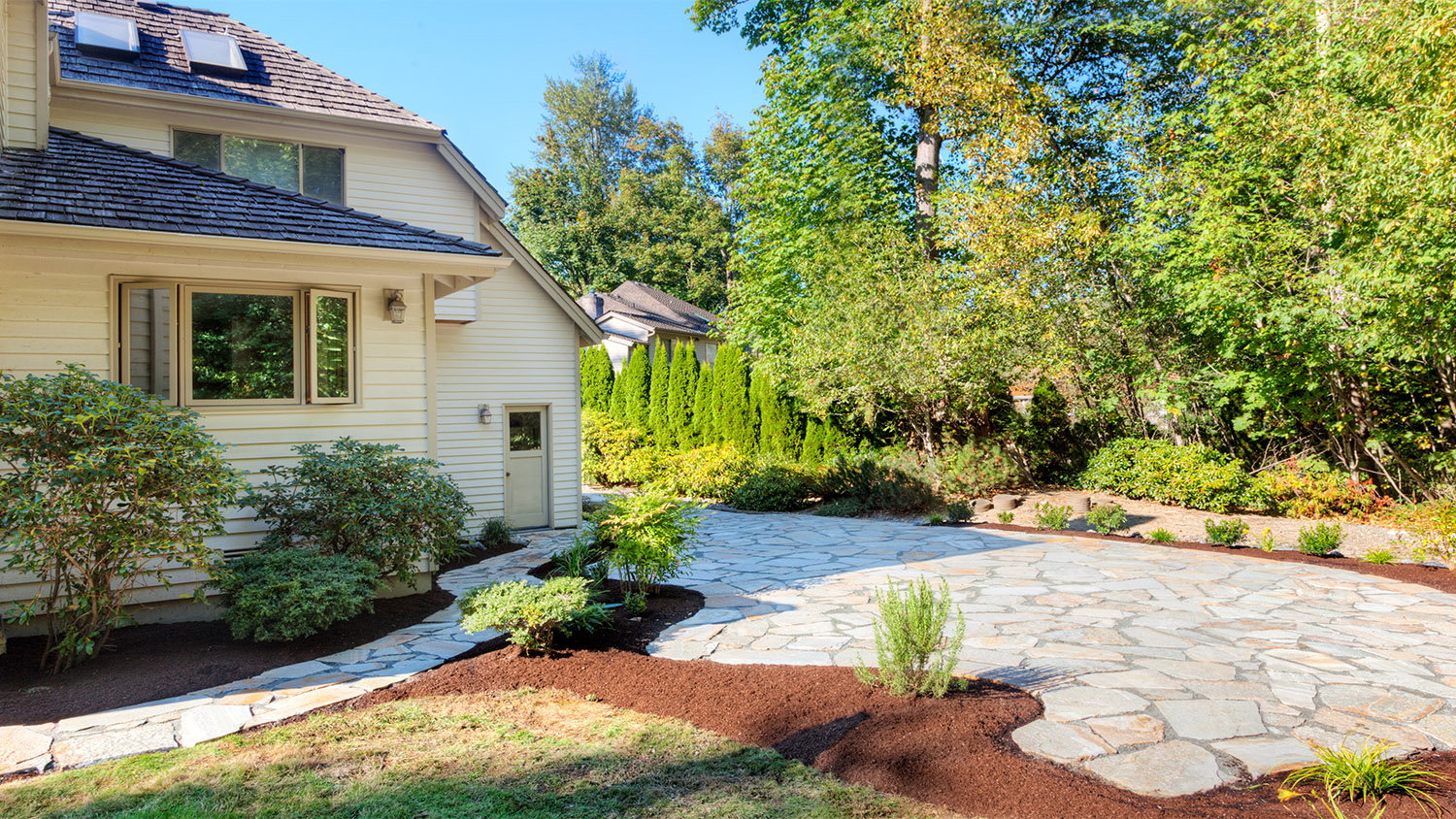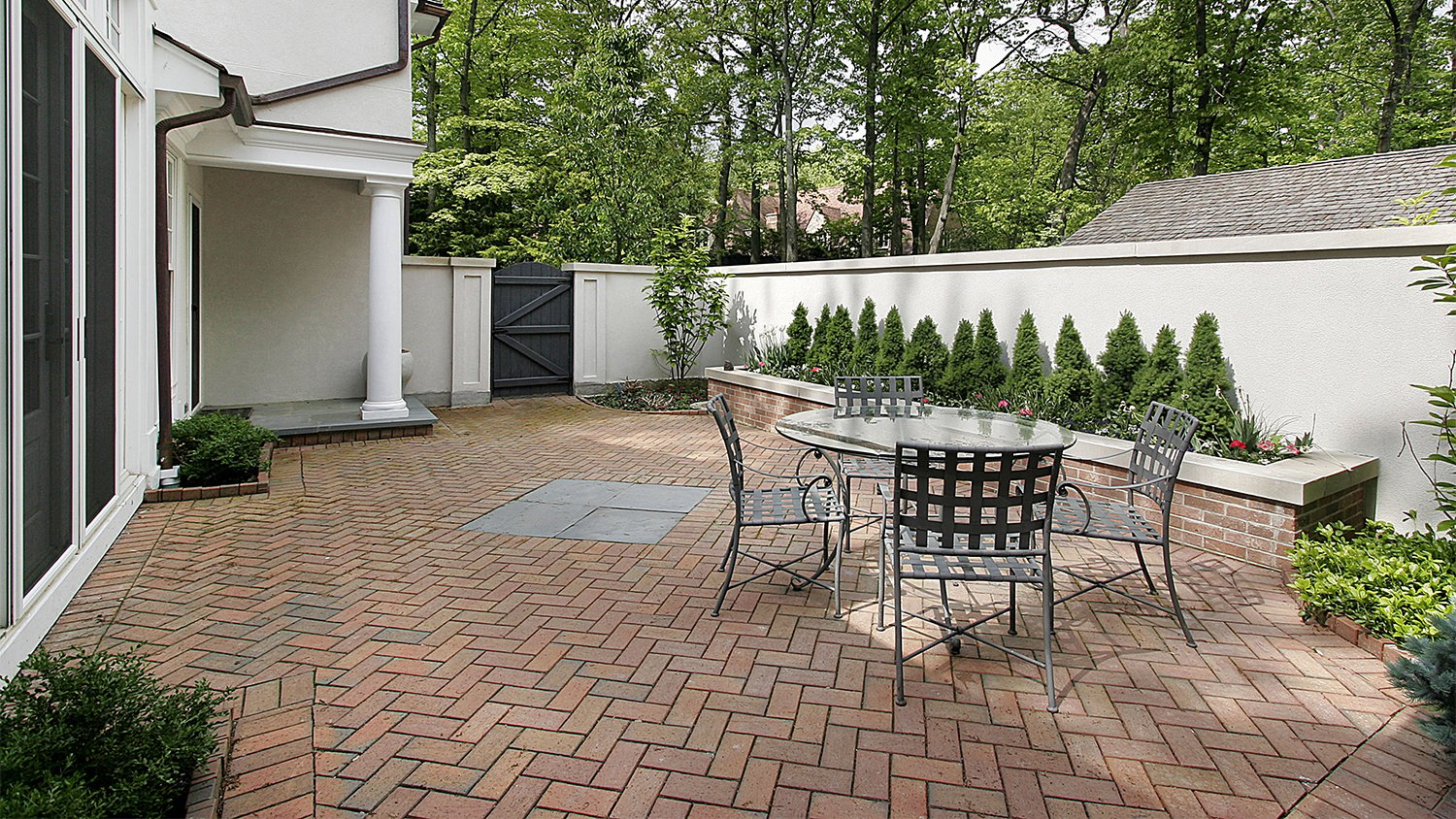Pavers vs. Concrete: Which to Use for Your Home Project
There are concrete differences between these two materials


Pavers come in many shapes and sizes, while concrete offers stamped or stained options.
Pavers are broadly more durable than concrete.
Concrete is significantly less expensive than pavers at between $4 to $15 per square foot.
Concrete maintenance and repairs tend to be more expensive.
Looking to build a new patio or walkway but are overwhelmed by the variety of materials available? Pavers and concrete are both popular options for building outdoor features, and they each have their own benefits and drawbacks. Learn the key differences between pavers and concrete, including cost, installation time, ease of repairs, and more.
Pavers vs. Concrete: Key Differences

Pavers and concrete both give your project a solid foundation, but a few things set them apart from each other. Pavers, or “paving stones,” are individual pieces that come in a wide array of sizes and shapes, ranging from a few inches to several feet wide. Concrete is an aggregate mixture of materials that is poured into a form or mold to create the desired shape. When constructing a feature like a patio, many pavers will need to be installed next to each other to form a solid surface, while concrete is usually poured to form one solid slab.
Both pavers and concrete are available in various colors and finishes, and concrete can be stamped after pouring to mimic the look of pavers. Pavers are the more expensive option, averaging between $6 and $30 per square foot compared to the average concrete cost of $4 to $15 per square foot.
What Are Pavers?
Pavers are made from materials like stone, brick, or clay and come as individual pieces that are fitted together to create a patio, walkway, or other outdoor features. They come in a range of sizes, which are often combined to create a customized look.
| Pros | Cons |
|---|---|
| Can be individually replaced | More expensive |
| Less prone to cracks | Prone to weed growth |
| Upscale aesthetics | Takes longer to install |
Best For:
Homeowners with a more flexible budget
Areas with ground that’s prone to shifting
Pros
Pavers are less prone to cracking than concrete due to their smaller size and ability to hold more weight per square inch. If one does crack or become damaged, however, repairs are a breeze—simply remove the broken paver and replace it. It’s also easier to account for shifting ground with pavers than it is with concrete since each paver can be adjusted as needed to adapt to new ground conditions.
Pavers are also a great choice when it comes to style. They offer a customized, high-end look that’s a step up from concrete and can give you the exact finished result you’re looking for.
Cons
All that style and easy replacement comes at a price—pavers can cost up to double the price per square foot as concrete, depending on the size and material. Because pavers are installed individually, they’re also more prone to weed growth between them, even when you fill the joints between them.
Pavers also require a longer installation time than concrete since they’re installed individually rather than poured all at once like concrete. For larger jobs, you might want to hire a contractor to install your pavers.
What Is Concrete?

Concrete is one of the most popular construction materials used for good reason. It can be poured into almost any shape, it’s durable and low-maintenance, and it’s available in various colors and finishes. Concrete is made from a mix of cement, water, and aggregate material like sand, gravel, or crushed stone that is poured to form a sturdy and durable slab.
| Pros | Cons |
|---|---|
| Budget-friendly | Difficult to repair |
| Easy to install | Prone to cracking and shifting |
| Available in many colors and finishes | Adding color or design adds cost |
Best For:
Homeowners on a budget
Large areas like driveways
Pros
Concrete is a cost-effective way to build outdoor features at about $4 to $15 per square foot. One of the main advantages of concrete is that it’s quick and easy to install—although you’ll need to let it fully cure and dry before using it. For those concerned about the aesthetic value, concrete can be colored and even stamped with concrete designs that mimic wood, stone, or brick.
Cons
Concrete is poured as one solid slab, so it doesn’t have much give when the ground underneath shifts or settles, leading to cracks and other damage. Damaged concrete is more difficult to repair than damaged pavers, so you’ll spend more time (and money) fixing it over its lifespan. And while you can customize the look of your concrete, those customizations add to the price, often bringing the cost up to that of pavers. When hiring a concrete contractor, be sure to find out what the final cost will be once you’ve added all the features you want.
Pavers vs. Concrete

Appearance: Pavers
Even when compared to stamped concrete, pavers have a more luxurious look that concrete can’t quite achieve. If aesthetics are important to you, pavers are the better choice.
Options and Customizations: Pavers
Pavers are available in an almost endless variety of colors, shapes, finishes, and sizes and can be combined for a truly custom look. Concrete has come a long way in terms of customization, but you’re still limited by the fact that it’s one slab of the same material.
Durability: Pavers
Concrete is known as a durable and long-lasting material, but most pavers can withstand up to four times the pressure of concrete and are less likely to crack due to shifting or settling ground conditions. They’re also less susceptible to water intrusion and damage from the freeze/thaw cycle.
Price: Concrete
Poured concrete is by far the more affordable option, but adding customizations can quickly increase the price. Pavers vary in price depending on the material and size but are generally more expensive than concrete for comparable square footage.
Ease of Installation: Concrete
Pavers are labor- and time-intensive to install since they have to be individually placed. When it comes to pouring concrete, a local concrete patio company can tackle the job in just a few hours, not including drying time. Both materials require the ground to be thoroughly prepared first, but once that’s done, installing concrete is a much quicker job.
Ease of Repair: Pavers
A broken paver is easy to replace—you won’t have to repair the entire surface like you would with concrete. Being able to switch out one paver will save you time and money when compared with having to fix a cracked concrete slab or level a sinking or shifting patio.
Maintenance: Tie
Both concrete and pavers need to be resealed every 1 to 3 years to maintain their surface, and both require periodic cleaning and debris removal. Fortunately, both materials are relatively low-maintenance aside from that, so unless repairs are needed, you won’t spend that much time on upkeep.
Tyler Lacoma contributed to this piece.





- The Pros and Cons of Putting Pavers Over Concrete
- Deciding Between Concrete, Stone, or Brick Pavers? Pros, Cons, and Cost Compared
- What’s the Difference Between Stamped Concrete and Pavers?
- How to Cut Concrete Pavers: 3 Methods to Do the Job Correctly
- How to Lay Pavers Like a Pro and Create Your Dream Outdoor Space
- What Are Interlocking Pavers?
- What Are Pavers and How Do They Help Build an Outdoor Paradise?
- The Ultimate Guide to Pool Deck Pavers
- Installing Pavers? Here’s What You Need to Know About Drainage
- Pros and Cons of Tumbled Pavers










